AR Barrels, Explained

The sheer volume of AR-15 options can be very overwhelming for a first-time buyer, or even someone with a few ARs of their own. This guide will break down the confusing world of barrels and what features really matter. We will also talk about matching up barrel features to intended purposes.
More AR-15 Content @ TFB:
- Best AR-15 Upgrades
- The Best Beginner AR-15
- Best Optic for the AR-15
- The Best Suppressor For The AR-15
- Best AR Pistols
- Best AR-15 Charging Handles for 2025
- Best AR-15 Cleaning Kits
- How to Choose the Ideal Twist Rate for Your AR-15
- Best AR-15 Slings
- The 5 Best AR-15 Tools for Your Gun Bench in 2025
- How to Clean Your AR-15: A Complete Guide
This article will not deal with twist rates because we have a full article on that topic coming soon.
Chamber
For simplicity, we will only be discussing 5.56 NATO and .223 Remington guns. There are myriad other options out there (like 6mm ARC or 6.5 Grendel Type II) but most guns in current production have a 5.56 NATO chamber. This is safe to use with both 5.56 and .223 ammo, which is an important feature because it allows more ammo options. Back in the day, some ARs had chambers cut for .223 Remington only. Those guns would usually function with 5.56 NATO but could have issues with the additional pressure and slight dimensional differences of that ammo. This is fairly uncommon now but should be remembered if you are shopping for a vintage rifle.
One other fun wrinkle is the .223 Wylde chamber. Though it has “.223” in the name, it is safe with both .223 and 5.56 ammo. This chamber design is more common in precision or match rifles but does not compromise performance for general usage either. And to make things even more convoluted, some manufacturers use a .223 Wylde chamber but still mark the barrel 5.56 so as not to scare away uneducated buyers who think the gun is limited to .223 Remington (or the nonexistent .223 Wylde) ammo only.
Lengths
Anyone who has seen an AR has probably noticed that they come in various sizes. How common those lengths are is a bell curve with the peak at 16 inches. The tails of that curve reach from 7.5 inches to 24 inches, with some shorter and longer options as outliers. The vast majority fall in the range from 10.3 to 20 inches.
Longer barrels produce higher velocities, but are physically larger and heavier. Short barrels cut down on weight and make it easier to move fast, but they trade velocity for those gains. The velocity difference is not trivial, either. Most 5.56 or .223 ammo depends on fragmentation for its wounding, and fragmentation only happens with most ammo if the bullet is flying fast enough. With short barrels the muzzle velocity may not even be high enough to fragment the bullets on impact, let alone at 100 or 200 yards. Specialized ammo that uses other wounding mechanisms can address these issues, but that type of ammo is not cheap nor is it usually on the shelf of your local Cabela’s.
There is no true “best” barrel length because that is dictated by how the gun will be used. I love 20-inch barrels because they can fragment any ammo at distance, and the added velocity makes it easier to hit targets on windy days or with unknown ranges. But I also live in the desert and shoot both for fun and in competition with a 20-inch barrel at long range. A barrel that long is a pain to use with a silencer, and barrels from 14.5-16 inches tend to be the most popular all-around picks. They are still handy even with a silencer without giving up too much velocity. 10.3 inches is the shortest practical length, and barrels that are shorter are losing a lot of velocity with each as they get shorter. For a first AR, go with a 16-inch barrel unless there is some compelling reason to do something else.
Lengths (Gas System)
ARs are gas-operated, harnessing the expanding gasses from the barrel to push the bolt to the rear with each shot. The barrel has a gas port located somewhere along its length where gas exits, enters the gas block, and in turn enters the gas tube for its return journey back to the bolt to cycle the gun. The further the gas port is from the chamber, the lower pressure the gun will operate at. Longer gas systems will run smoother than short ones, but too long of a gas system can result in failures to cycle with light ammo. Gas port size also plays a role in this, but that is a whole other conversation. Most gas systems are one of the standard sizes, which are (from shortest to longest): pistol, carbine, mid-length, and rifle. There are other specialized ones out there like intermediate (which is different than mid-length!) or rifle +2, but those are the exception.
Here are a range of AR uppers with various barrel and gas system lengths (top to bottom):
- Rock River competition service rifle upper, 20 inches with rifle gas system
- Mk-12 Mod 0-ish build, 18 inches with rifle gas system
- FN-15 upper, 16 inches with carbine gas system (note M-4 barrel step)
- PSA Sabre-15 upper, 14.5 with pinned and welded flash hider for 16 inch OAL, mid-length gas
- Brownells 733 upper, 11.5 inch pencil barrel with carbine gas system
- Retro shorty upper, 10.5 inches with carbine gas system
Contours
Barrels come in many shapes, known as contours. They range from large diameters on precision guns down to tiny pencil barrels that are as light as possible. As a general rule, heavier barrels are stiffer and will lose less accuracy when they get hot. Lighter barrels heat up faster and group sizes will expand faster, but they are much lighter to carry around and also cool off faster.
Here are some common contours:
Heavy/Match: Very thick under the handguard, .750” at the gas block, continuing at that diameter to the muzzle.
Government: Lighter under the handguard, widening out to .750” at the gas block, and remaining thicker than the rear portion out to the muzzle.
M4: Government profile, but 14.5-16 inches long with a step cut into the barrel for mounting an M203 grenade launcher.
Pencil: Skinny from receiver to muzzle, with a .625” gas block diameter.
Many manufacturers have developed their own designs and names for different contours, and they are not always identical. It is always a good idea to look closely at a picture of the barrel separated from the gun and handguard to be sure you understand what you are getting.
Materials
Essentially all AR barrels are made of steel. Some may be steel wrapped in something else, like aluminum (see the original AR-10) or carbon fiber, but those are rather rare. While barrels are all made of steel, they are not necessarily made of the same kind of steel. The most common grade of steel is 4150. Another common, but less-ideal steel grade is 4140. 4150 is stronger and will generally last longer than 4140. Both of these grades of steel contain chromium-molybdenum, which manufacturers often shorten to chromoly. This IS NOT a chrome lining, which we will discuss later. Beware any seller that highlights the “chromoly” content in a way that is trying to confuse buyers into thinking it is a chrome lining.
The other common barrel steel is stainless, usually 416R. Stainless barrels will not last for as many rounds as a 4150 barrel, but they usually produce the best results. Most match-grade rifle sport stainless barrels to maximize accuracy.
Finishes
Very few barrels other than stainless ones are bare metal. Most use some kind of coating on the outside and/or inside of the barrel to change the material characteristics of the steel. The two most common coatings are nitride and chrome lining. Chrome-lined barrels have a layer of hard chrome applied inside the barrel and chamber. That chrome finish is extremely durable and resistant to corrosion, which is why military barrels generally have this finish.
Chrome is not applied to the outside of the barrel, so there is not an easy way to tell at a glance from the outside if a barrel has a chrome lining. Most manufacturers mark “CL” on the barrel to indicate Chrome Lining. The outer surface of these barrels will still have a phosphate appearance, which is a sort of dull gray.
The difficulty with adding chrome to a bore is that it adds thickness. Barrels must be cut out slightly oversize, with the chrome lining adding the last layer of thickness to reach the correct specification. This process is tricky and not all manufacturers apply the chrome layer with perfect uniformity, and these irregularities manifest in some loss of accuracy. How much accuracy loss there is is highly manufacturer specific. FN is recognized as a leader in this field and their chrome lining is so precise that they won an FBI sniper rifle contract with a chrome-lined barrel in one of their bolt action guns. Chrome lining is often overkill for civilian applications but many people like the added reassurance of having the most durable finish possible inside the barrel.
Nitride (or QPQ) is a different process that treats the entire barrel. Through heating and other chemical wizardry, this finish makes the barrel steel harder and more slippery by adding nitrogen to the steel. It is not quite as durable as chrome lining, but it is much less expensive and does not affect accuracy because it adds essentially no thickness to the finished barrel. This is a cost-effective way to get more barrel life with basically no downside. Nitride barrels usually have a slick black outer finish that will look glossy.
Quality
Now that all the technical stuff is out of the way, we need to talk about quality. None of the features or materials matter if the barrel is made poorly. General rules, like stainless barrels being more accurate than chrome-lined ones, can and often do break down when comparing a quality barrel to a cheap barrel. You get what you pay for. It is totally fair to not need a lapped, air-gauged match barrel if you only use that AR for mag dumping into trash. But do not expect a no-name $50 stainless barrel to guarantee accuracy because it is stainless. Quality barrels held to the tightest tolerances are not cheap.
Recommendations
So many barrel options exist because they all do different things well. The first question a buyer needs to answer before buying a new barrel is what role will the gun fill? Is this a budget blaster or a DMR? Will this see a lot of hard use in carbine classes or with a binary trigger, or is this a gun that will sit behind the seat of a farm truck and be fired twice a year? Here are some general guidelines:
On a budget: Look for a nitride or QPQ barrel finish to extend the lifespan without compromising accuracy.
Maximum Accuracy: Find a stainless steel barrel with a heavier contour from a manufacturer with a reputation for quality.
Hard Use: Chrome lining will last the longest.
Length: Choose the longest barrel length that is practical for your use case.
And above all else, remember that you get what you pay for with barrels. A cheap barrel may shoot well, but you are far more likely to see real accuracy out of a quality component!

AKA @fromtheguncounter on Instagram. Gun nerd, reloader, attorney, and mediocre hunter.
More by Daniel Y
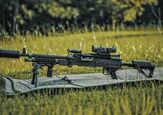
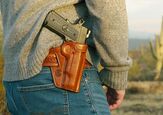
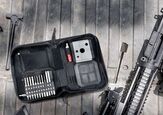












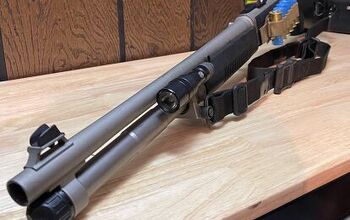

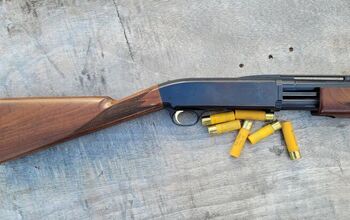
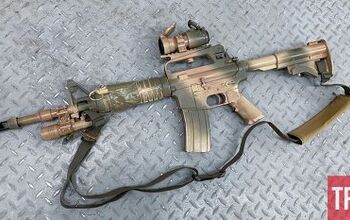
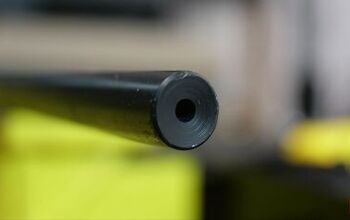
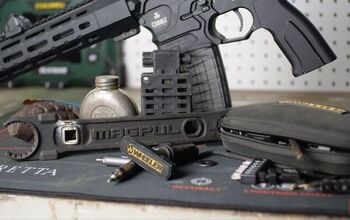
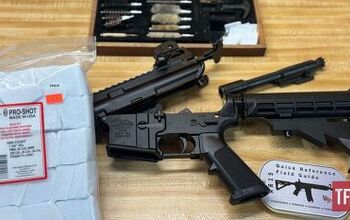
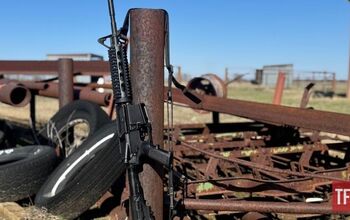




![[SHOT 2025] March Scopes Displays PRS-optimized Scope](https://cdn-fastly.thefirearmblog.com/media/2025/01/23/10591/shot-2025-march-scopes-displays-prs-optimized-scope.jpg?size=350x220)
![[SHOT 2025] PTR-63 And The New Vent Spiritus 5.56i Silencer](https://cdn-fastly.thefirearmblog.com/media/2025/01/28/23466/shot-2025-ptr-63-and-the-new-vent-spiritus-5-56i-silencer.jpg?size=350x220)
![[SHOT 2025] Mars Inc.’s Precision Grenadier System](https://cdn-fastly.thefirearmblog.com/media/2025/01/24/07511/shot-2025-mars-inc-s-precision-grenadier-system.jpg?size=350x220)
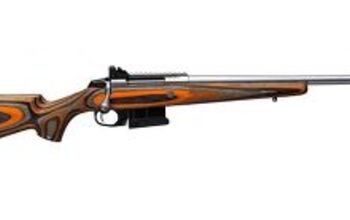


Comments
Join the conversation
Both for FA as well as for accuracy, I've learned to live with heavier barrel weights as a compromise. Heavy profile barrels (preferably with fluting) are all I use or for builds now.
The best way to check if the barrel has been properly made is with a function gauge set, head space gauge set and a bore scope. The AR gas system is cycled by residual pressure, which is why I prefer an adj gas block to find the proper gas setting sweet spot. Nirtride barrels do not hold up to extreme heat as a chrome line barrel does, but in semi auto it is a mute point for most uses.